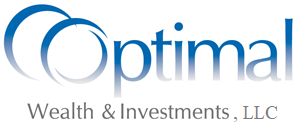What is Sequence of Return Risk?
In baseball, if the center fielder for your favorite team starts the season with zero hits in the first 100 at-bats, he is likely to not play again. Benched. Done for the year. The center fielder may have had 60 hits out of the next 100 at-bats, but because of the first sequence of zero for 100, he never got the chance. It was a poor sequence. He was horrible, then great....but the horrible came first. The baseball manager wants a consistent sequence, about 30 hits per 100 at-bats. The same holds true for investment returns for retirees.
Uniformity of occurrence. When a person embarks on the retirement thought, the sequence of returns is of great significance. This notable time period will the few years leading up to retirement, and the first few years of retirement. A poor sequence of returns at the beginning stages can permanently damage an otherwise strong retirement plan.
Contrast the two retirees:
- Retired Pete, retires in 2000. Pete expects 20 years of retirement. Pete’s returns are directly tied to the performance of the S&P Index, years 2000-2019.
- Retired Rich, retires in 2000. Rich expects 20 years of retirement. Rich’s returns are directly tied to the performance of the S&P Index, but he experiences the exact opposite return sequence. Year 2019 is his first year return, and year 2000 is his last.
In this example, Pete and Rich start with the same amount of funds, spend the same about of funds, experience the exact same returns, and the exact same average return. The stark difference is that Pete starts his retirement with three negative years (2000, 2001, & 2002), while Rich ends his retirement with three negative years. Does it make any difference?
The answer is a clear yes. Poor Pete, starting with $1,000,000 and spending $75,000 increasing at 2% per year, would run out of money in 2010. The early poor sequence of returns doomed his retirement.
Rich, on the other hand, starts with $1,000,000, spends $75,000 per year increasing at 2% per year, sees the value of his investments below $1,000,000 for the first time in year 19 of retirement.
The sequence of return risk is a real risk facing millions of baby-boomers, who are considering or implementing retirement plans. The capital markets have performed well over the last few years. We don't know what the near future holds. If you have failed to consider this risk, you are rolling the dice on retirement. There are no do-overs in retirement. You get one roll, one shot.
Although it is challenging to eliminate. there are ways to mitigate sequence of return risk. Through proper risk assessment, risky asset exposure, knowing the difference between risk capacity and risk tolerance, and changes in investment objective, some of this risk can be hedged. If you are considering retirement, you need to know what your sequence of return risk is. Please reach out to us at Optimal Wealth & Investments to help you navigate this risk, setting you up for a successful and healthy retirement.
Adam Chaney
Certified Financial Planner, CFP®
Chartered Retirement Planning CounselorSM (CRPC®)
Accredited Portfolio Management AdvisorSM (APMA®)
https://www.linkedin.com/in/adam-chaney-cfp-81193210
Securities & Advisory Services offered through LPL Financial, a Registered Investment Advisor. Member FINRA/SIPC.
Optimal Wealth & Investments and LPL Financial are separate entities. Investing involves risk including loss of principle.
